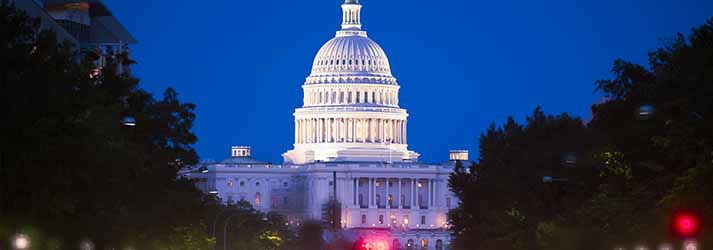January 2019
Following its worst December since 1931, the S&P 500 Index experienced its best January since 1987. Investors appeared to shrug off the implications of a protracted partial shutdown of the federal government, concentrating instead on encouraging corporate earnings releases and signs that the Federal Reserve (Fed) was moderating its hawkish monetary stance.
- The Fed eased its hawkish monetary policy stance
- Q4 corporate earnings came in slightly ahead of expectations
- Trade discussions between the US and China continued
- “The CBO calculated that the 35-day shutdown had cost the US economy around US$3 billion”
To view the series of market updates through January, click here.
Following its worst December since 1931, the S&P 500 Index experienced its best January since 1987. Investors appeared to shrug off the implications of a protracted partial shutdown of the federal government, concentrating instead on encouraging corporate earnings releases and signs that the Federal Reserve (Fed) was moderating its hawkish monetary stance. Over January as a whole, the S&P 500 Index rose by 7.9% and the Dow Jones Industrial Average Index climbed by 7.2%, while the Nasdaq Index rose by 9.7%
“SThe CBO calculated that the 35-day shutdown had cost the US economy around US$3 billion”
To date, fourth-quarter corporate earnings generally came in slightly better than expected, although estimates had, in many cases, already been lowered. Industrials was the best-performing S&P industry sector over January, followed by energy, and communication services. Utilities was the worst-performing sector, but still ended the month in positive territory. During the month, department store operator Macy’s issued a profit warning caused by weaker sales over the holiday period, while Apple cut its quarterly sales forecast for the first time in 15 years, warning that revenues were likely to be adversely affected by slower demand for its iPhones in Greater China, exacerbated by the ongoing trade conflict between the US and China.
Trade discussions between the two countries continued slowly during January. In an interview with the New York Times, President Trump confirmed that the US was “getting closer” and negotiations were “going very well”. The CBO warned that new tariffs could reduce economic growth by 0.1% by 2022 as higher costs dampen consumption and private investment.
President Donald Trump finally capitulated and brought the longest-ever US government shutdown to a temporary end. The deal, however, only finances the government until 15 February, and he refused to give up on his pledge to build a wall. The Congressional Budget Office (CBO) calculated that the 35-day shutdown had cost the US economy around US$3 billion and would reduce first-quarter economic growth by 0.2%.
The Federal Reserve (Fed) appeared to moderate its hawkish stance on monetary policy. Minutes from the December meeting of the Federal Open Market Committee (FOMC) showed that policymakers were shifting to a more “patient” approach, citing muted inflationary pressures against a backdrop of volatile financial markets and mounting concerns over the outlook for global growth. Based on current information, policymakers believe that “a relatively limited amount of additional tightening” is going to be necessary.

















